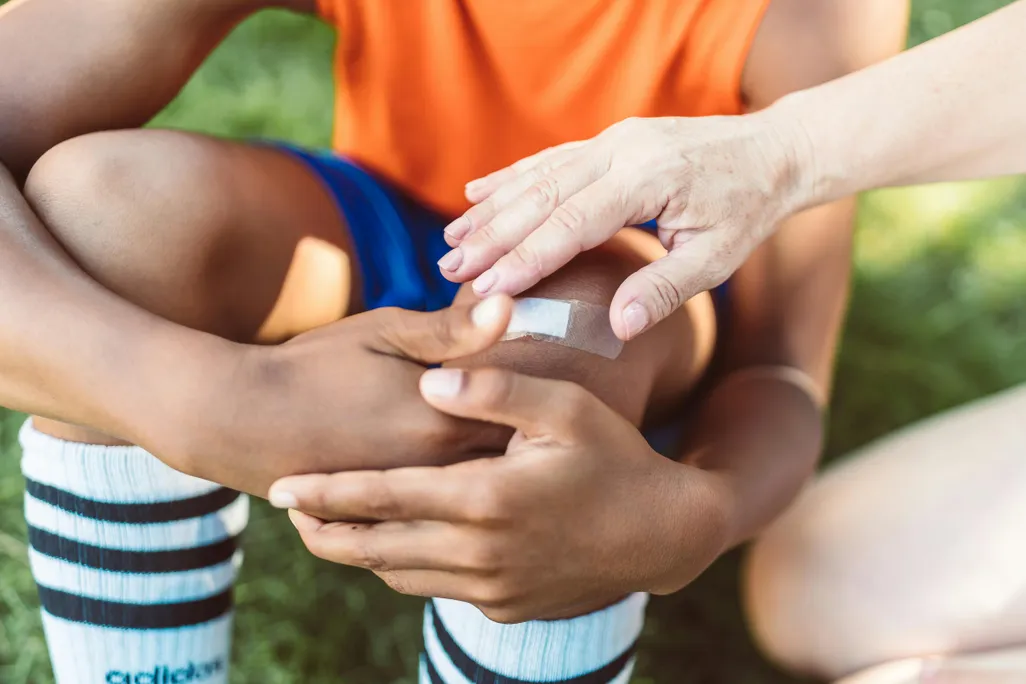Human Evolution Traded Fur for Sweat Glands—and Now, Our Wounds Take Longer to Heal Than Those of Other Mammals
Human Evolution Traded Fur for Sweat Glands—and Now, Our Wounds Take Longer to Heal Than Those of Other Mammals
Even compared to chimpanzees, one of our closest relatives, humans’ scrapes and cuts tend to stick around for more than twice as long, new research suggests
Human wounds take longer to heal than the wounds of other mammals, researchers find. That could be because we have fewer hair follicles, and stem cells in hair follicles help regrow skin after an injury.
Pexels
While observing wild baboons in Kenya, researcher Akiko Matsumoto-Oda noticed something striking. Whenever the animals got injured in fights with each other, their wounds healed quickly—much more quickly, it seemed, than her own scratches and scrapes.
Now, Matsumoto-Oda has data to back up that hunch. In experiments, human wounds took more than twice as long to heal than those on other mammals—including chimpanzees, which are one of the closest relatives to Homo sapiens. Matsumoto-Oda, who is an evolutionary biologist at Japan’s University of the Ryukyus, and her colleagues describe their findings in a new paper published Wednesday in the journal Proceedings of the Royal Society B.
For the study, the team compared the healing rates of humans with those of rats, mice and four primate species: vervet monkeys, Sykes’ monkeys, olive baboons and chimpanzees.
They studied 24 human patients who had recently had skin tumors removed, taking daily measurements of the wounds to see how much they had shrunk. On average, the wounds healed at a rate of 0.25 millimeters per day.
To gather data on the other mammal species, they anesthetized and surgically wounded captive lab mice, rats, olive baboons, Sykes’ monkeys and vervet monkeys. They also studied naturally occurring wounds—mostly caused by fighting—on five captive chimpanzees. The animals’ wounds healed at a rate of approximately 0.61 millimeters per day, on average.
Researchers were not entirely surprised by the results, because skin healing is affected by hair. The follicles at the root of each hair contain stem cells, which, in addition to producing hair, can grow new skin when necessary. Since humans have much less hair than other mammals do, it makes sense that our wounds would also take longer to heal.
“When the epidermis is wounded, as in most kinds of scratches and scrapes, it’s really the hair-follicle stem cells that do the repair,” says Elaine Fuchs, a biologist at Rockefeller University who was not involved with the research, to the New York Times’ Elizabeth Preston.
At some point in the evolutionary journey, humans lost most of their body hair. Since chimps’ wounds heal faster than ours, this shift likely occurred after humans diverged from our shared ancestor with the primates, reports New Scientist’s Chris Simms.
It’s not entirely clear why early humans lost their hair. But it seems our species swapped the once-abundant hair follicles for sweat glands, which are not as efficient at healing wounds but help keep us cool in hot environments.
In theory, this slower wound healing rate should have put humans at a disadvantage. But the researchers speculate that support from friends and family, as well as the use of certain plants as medicine, helped humans survive.
For example, archaeologists have unearthed a 1.8-million-year-old skull that belonged to an elderly Homo erectus male whose teeth had fallen out long before he died. Similarly, researchers discovered the remains of a Neanderthal male who lived to reach to middle age, despite having lost his right arm and suffering other injuries. The only way these individuals could have survived, researchers posit, is if their peers took care of them.
Scientists have also found traces of plants with antibacterial and pain-relieving properties in Neanderthals’ dental plaque. This suggests early human species may have understood that eating certain plants could help them overcome illnesses and injuries.
“Such social and medical support may have helped mitigate the adaptive disadvantage of a slower wound-healing rate,” the researchers write in the paper.
Get the latest stories in your inbox every weekday.


